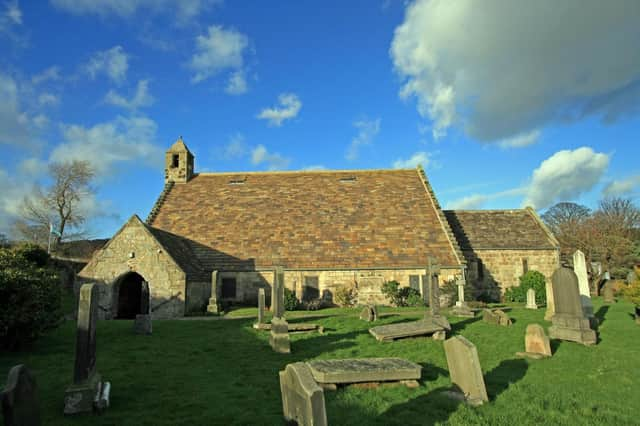Prayers answered as Scotland’s ‘oldest kirk’ saved from cull


A church thought to be the oldest in Scotland has been saved from a cull of kirks in its 900th year, after parishioners' "prayers were answered".
St Fillan’s Parish Church in Aberdour, Fife, dates back to 1123, but in spite of its rich heritage it was earmarked for closure as part of a controversial downsizing exercise by the Church of Scotland in order to ease rising running costs at a time of dwindling income and falling congregations.
Advertisement
Hide AdAdvertisement
Hide AdPresbyteries across Scotland have been working to determine which properties should be sold in a bid to ensure the Church is "lean and fit for mission in the 21st century".
St Fillan's has now been taken off the endangered list, however, after a year-long campaign to keep it alive won over the influential Historic Churches Working Group tasked with evaluating those marked for closure.
Andy Bastow, chair of St Fillan's 900-year celebrations committee, said Aberdour was overjoyed that the kirk's future had been secured.
He said: "We are delighted that St Fillan’s, one of Scotland’s oldest churches, no longer faces an uncertain future. The village came together as one to campaign for it to be saved and thankfully our prayers have been answered.
"We can now look forward to the future in the knowledge that the church reaching its 900th anniversary is not to be the end of its story as a place of worship. We can all now enjoy our 900th anniversary celebrations safe in the knowledge that St Fillan’s is to go on."
St Fillan's, dubbed a "miniature cathedral" and "one of the finest examples of Norman architecture in Scotland" was included on a list of 51 properties in Fife to be "sold, let or otherwise disposed of". But villagers claimed it was a victim of a flawed algorithm biased towards modern buildings at the expense of historical treasures that form the bedrock of communities.
Public meetings were held and more than 150 letters of objection were submitted to Fife Presbytery in opposition to the plan, which St Fillan's property convener Willie Crowe -- also a fifth generation member of the congregation -- dubbed "an act of cultural vandalism".
Parishioners also insisted they would not be kicked out of their church "a second time" after the congregation was "evicted" in 1790 by the Countess of Morton, who didn’t want them worshipping so close to her Aberdour Castle residence. Then, they were forced to build another kirk -- now used as the church hall -- and St Fillans was abandoned as a place of worship until it was restored as the parish church in 1925.
Advertisement
Hide AdAdvertisement
Hide AdThe campaigners were given hope after the Historic Churches Working Group was tasked with looking again at the long term viability of kirks such as St Fillan's.
The working group reported its findings back to Fife Presbytery, which has the power to reverse the previous designation in agreement with the National Church.
The working group has now ended months of worry by rubber stamping St Fillan’s retention.
A spokesman for the Church of Scotland said Fife Presbytery met and approved the working group’s report which should mean St Fillan’s future as a place of worship has been secured.
Comments
Want to join the conversation? Please or to comment on this article.